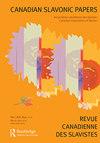Trains of thought: narrative foreshadowing and predictive processing in Anna Karenina
IF 1.6
Q2 ETHNIC STUDIES
引用次数: 1
Abstract
ABSTRACT This article shows how the cognitive theory known as “predictive processing” can expand our understanding of the ways in which readers are primed by textual cues in Lev Tolstoi’s Anna Karenina to predict story developments, and how this process is linked to narrative momentum and affective engagement. In turn, this study expands the applicability of predictive processing, which relies on the idea that the human brain routinely predicts and updates information in unfolding scenarios, to literary contexts, in productive combination with narrative theories of foreshadowing and schema usage. The authors examine how these systems of cues motivate and shape involvement in the fictional scenarios of Anna Karenina and how they contribute to the text’s foreboding narrative draw – most notably with regard to the redolent motif of suicide by train.思路:《安娜·卡列尼娜》中的叙事铺垫与预测处理
摘要本文展示了被称为“预测处理”的认知理论如何扩大我们对列夫·托尔斯泰的《安娜·卡列尼娜》中文本线索引导读者预测故事发展的方式的理解,以及这一过程如何与叙事动力和情感参与相联系。反过来,这项研究将预测处理的适用性扩展到文学语境,并与伏笔和图式使用的叙事理论进行了富有成效的结合。预测处理依赖于人类大脑在展开的场景中定期预测和更新信息的想法。作者研究了这些线索系统是如何激励和塑造安娜·卡列尼娜的虚构场景的,以及它们是如何促成文本的不祥叙事的——最引人注目的是火车自杀的主题。
本文章由计算机程序翻译,如有差异,请以英文原文为准。
求助全文
约1分钟内获得全文
求助全文

 求助内容:
求助内容: 应助结果提醒方式:
应助结果提醒方式:


